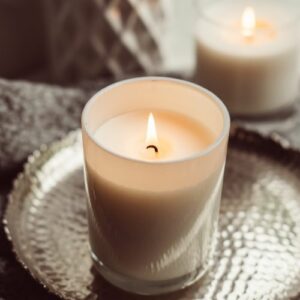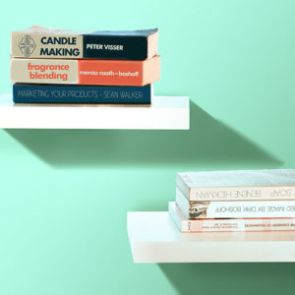How to Conduct A Burn Test
As a candle maker, conducting burn tests is a crucial step in ensuring that your candles are safe, high-quality, and provide an optimal burn experience for your customers.
Burn testing involves evaluating the performance of your candles under different conditions and with variations, including wax type, fragrance type, wick type, fragrance load, colour or any additives like coconut oil. To ensure the safety of each candle you choose to sell, it’s essential to conduct burn tests for each combination of these variables. It’s also important to conduct periodic testing due to natural variations in supplies, especially for soy and natural waxes.
It’s recommended to conduct burn tests at the maximum cure time (usually 10-14 days for soy and 24hour for paraffin), not waiting for full cure can result in inaccurate test results of wick sizing and create issues with the hot throw.
Burn tests should be done before gifting or selling your candles to customers to ensure safety standards are met. Consistent testing can help refine and improve your candle-making skills.
To begin a burn test, you’ll need:
- a completed candle,
- ruler,
- scissors,
- burn testing notepad/test sheets,
- and a scale to measure the weight.
Place the candle on a clean, flat, heat-resistant surface in a draft-free area, label it, and trim the wick to 0.5 cm then light. Allow the candle to burn for 4 hours, before extinguishing. The wax pool should reach the container’s edge within 2- 4 hours of burning, and depending on the size of the vessel & the number of wicks used, with a melt pool depth of between 0.5cm to 1.3 cm. Extinguish your candle after 4 hours, and allow to cool. The candle should be fully set and cooled before relighting for the next burn cycle(4 hour burn period).

It is crucial to wait until the fourth burn cycle before drawing any conclusions about the wick choice and testing the entire candle rather than just the first few burns will give you the most accurate results. When burn testing, observe flame size, burning speed, smoke and soot, mushrooming, and the melting pool’s size. A small amount of soot and mushrooming is considered normal, and flame 2.5 cm to 5 cm is considered normal for soy wax and up to 7cm for paraffin wax. If the flame is too large, and the candle burns too quickly or slowly, produces excessive smoke or soot, or mushrooming occurs, adjust the wick size or wax type as necessary.
It is always a good idea to include a power burn in your testing to ensure your vessel can handle the heat generated. A power burn is burning your candle consecutively for 8-10 hours to see how the glassware performs and how your candle will perform under stress.
Conducting testing before selling candles is essential to ensure they meet safety standards and provide a quality experience for customers and friends. By prioritizing burn testing and making necessary adjustments, you can create exceptional candles that are safe, high-quality, and provide an optimal burn experience for your customers and ensure returning sales for your business.




